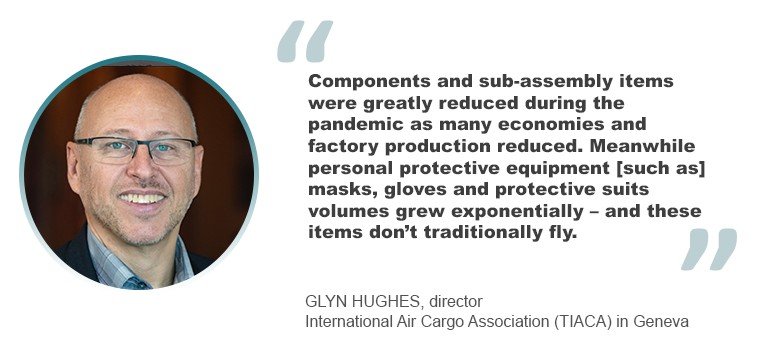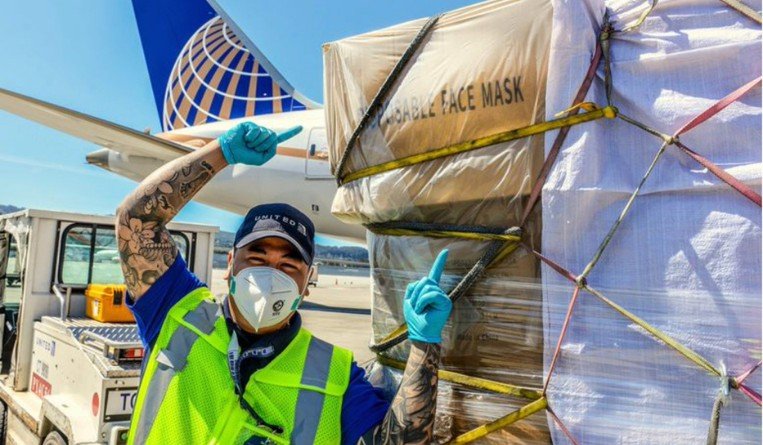It’s news to nobody that the coronavirus pandemic has brought a surge in e-commerce to the airlines. What needs to be considered alongside the surge is what is being moved and the problems this product mix will bring to an already tight supply market, says Glyn Hughes, director of The International Air Cargo Association (TIACA) in Geneva. Hughes made his remarks late last year as global head of cargo at the International Air Transport Association (IATA).
There has been a dramatic swerve away from the traditional mix of high-end perishables and high-value tech goods to a much more basic list of products.
“Components and sub-assembly items were greatly reduced during the pandemic as many economies and factory production reduced,” he told Asia Cargo News at the time. “Meanwhile personal protective equipment (PPE) [such as] masks, gloves and protective suits volumes grew exponentially – and these items don’t traditionally fly.”
Some of the statistics IATA has compiled, especially for goods usually not moved by air, are, simply put, incredible. Rubber gloves and cough medicine movements have increased by 670% and 535%, respectively. That first statistic is not all disposable gloves, but includes the PPE the world went crazy for in the early part of the pandemic.
Adding to the curiosity, the movement of bread machines has risen by 652%, while dried grains and rice, low yielding commodities if ever there was, saw a 386% increase.
And if one fact shows how different this pandemic has made 2020: Toilet paper, when moved as air cargo, increased 190%.
What slipped was not so much the usual freight products being moved, but the cargo passengers bring with them. “Traditional travel-based products” like luggage was down 77%, cameras 64%, golf clubs 33% and bridal clothing and men’s formal wear down 62% and 63%, respectively. Gym bags were down 57%, so the tuxes might be a fair bit tighter.
Thriving as the stay-at-home lockdown economy has been it does underscore the concerns there are about capacity going forward. “Eighty percent of cross border e-commerce is transported by air that again places considerable extra demand on that quite short supply of capacity,” said Hughes.
As to the question of where things are moving from and to? “North Pacific and Middle East/Asia trade lanes as those which have rebounded quickest which is linked to those economies reopening more quickly,” said Hughes.

Michael Mackey



